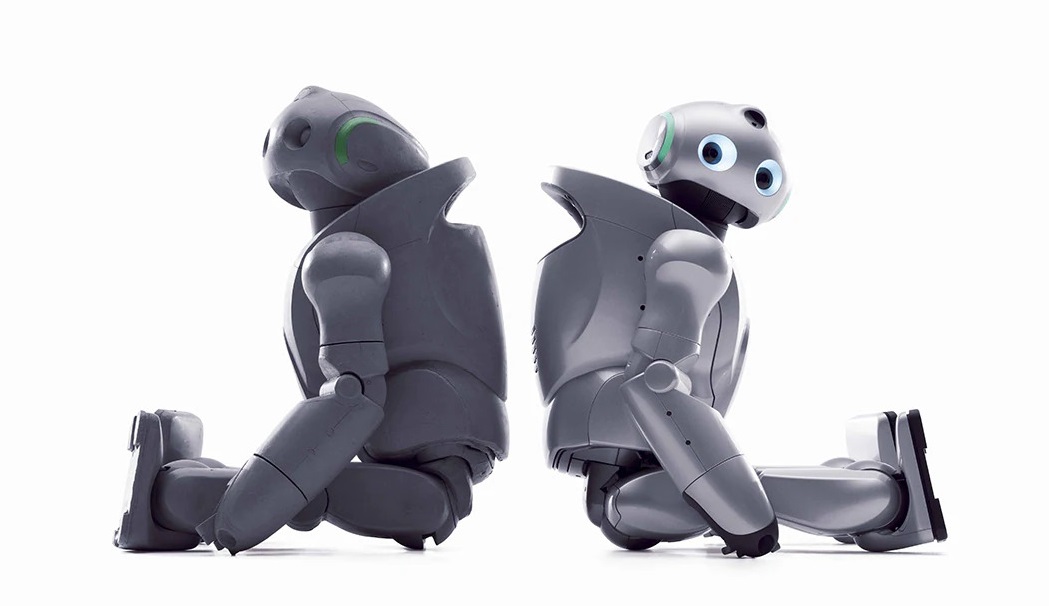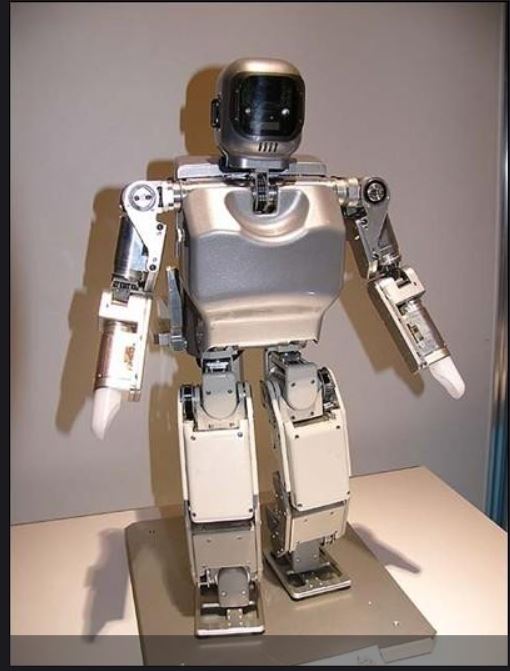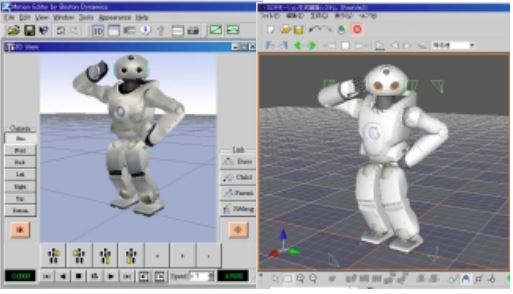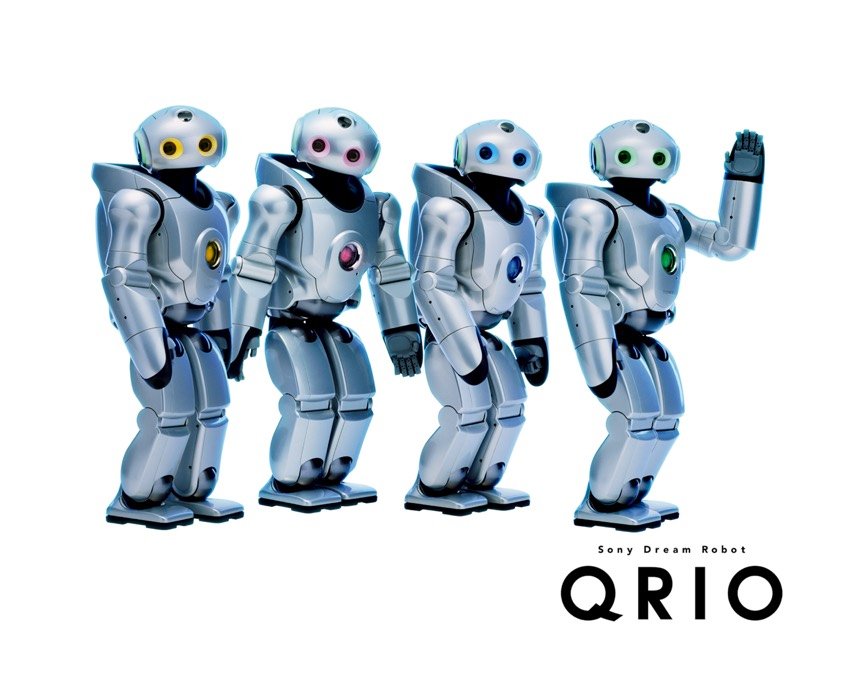Sony Dream Robot and Qrio

SDR-0 and SDR-1
No pictures or info known.
SDR-2
Only one picture found so far, assumed to be from ROBODEX 2000.

SDR-3X
Sony announced SDR-3X on November 21st, 2000. The 50 cm tall biped features a total of 24 degrees of freedom: 2 in the head, 2 in the torso, 4 per arm, and 6 per leg. Sony developed three different sized (ISA) Intelligent Servo Actuators which are a combination of motor, gearhead, and control cricruity. SDR-3X uses ZMP (zero moment point) to walk at up to rates of 15 meters per second. The robot also has two microphones that allow it to recognize up to 20 predefined words. SDR-3X also has a CCD camera module that it can use to track areas of color such as a pink ball.
SDR-4X
Sony unveiled SDR-4X on the 19th of March 2002 and presented it at ROBODEX 2002. The robot has been aesthetically completely redesigned compared to the previous versions.
The robot features two CCD cameras for eyes, infrared distance sensors on the head and feet, 7 microphones, and a speaker for audio output. SDR-4X has a total of 38 degrees of freedom: 4 in the neck, 2 in the torso, 5 per arm, 6 per leg, and 1 per finger. Compared to the actuators in SDR-3X, the ISA’s in SDR-4X have “approximately 30% improvement in the start-up torque, an approximately 15% improvement in rated torque, and an approximately 20% improvement in efficiency.” SDR-4X can walk at 20 meters per second on smooth ground, 6 meters per second on irregular ground, and walk up and down a slope of up to 10 degrees. SDR-4X has the ability to memorize 10 faces and recognize people by their voice tone. SDR Motion Creator allows for keyframing the arms and head joints for animation, and automatically calculates the leg and torso positions to keep the robot balanced.

SDR-4X II
Announced on March 24th, 2003 and exhibited at ROBODEX 2003. Newly introduced map-building and navigation features. Added CPU (for a total of three RISC CPUs) allows for local voice recognition of 20,000 words. Internal battery charging and a charging dock developed. Eighteen pinch sensors and one grip sensor in the handle for safety when touched.

In September of 2003, Sony officially renamed SDR-4X II to Qrio. On December 18th, 2003, Sony announced that they had successfully made Qrio run (both feet off the ground at the same time). This is the first time a biped with an internalized power and control system has run.
Unnamed Last Version
New version of Qrio officially announced on January 23rd, 2006. Qrio gained two additional degrees of freedom per arm, a pressure sensor in the palm, and a new wide angle camera mounted on the forehead. Qrio is now able to carry objects up to 120 grams. Sony discontinued all robot development on January 26th, 2006.
Notable Appearances:
One oversees appearance at the Ontario Science Center in 2005. Only time Qrio has spoken English. (One other known overseas appearance at London “Best of Stuff”).
Beck “Hell Yes” music video:
First showing in ten years (!) at Robocup 2017:
Where are they today?
Around when Sony formally announced the cancellation of all entertainment robot projects on January 26th, 2006, daily shows of Qrio dancing ended at Sony Center in Ginza, Tokyo, Japan.
Qrio has made static appearances at several Sony events such as the “It’s a Sony” exhibit taking place in their Ginza headquarters. Qrio has been on display at the Sony Archives building in Shinagawa, however, the building has been marked closed for several years on Tripadvisor and Google Maps.
Research papers with more info:
Real-Time Path Planning for Humanoid Robot Navigation, Experimental Studies of a Neural Oscillator for Biped Locomotion with QRIO, An ethological and emotional basis for human–robot interaction, A Small Humanoid Robot SDR-4X for Entertainment Applications, Autonomous Behavior Control Architecture of Entertainment Humanoid Robot SDR-4X, Behavior description and control using behavior module for personal robot, Motion Creating System for A Small Biped Entertainment Robot, Image Recognition of Small Humanoid Robot SDR-4X II, Multi-method learning and assimilation, Associated Emotion and its Expression in an Entertainment Robot QRIO
Notes:
Lot’s of behind the scenes footage or Qrio from Adafruit:
Link to presentation with more info about ISA’s: https://abipictures.tistory.com/157
Need to upload clips from 2005 and 2006 neural network presentations: https://pc.watch.impress.co.jp/docs/2006/0427/kyokai47.htm
Need to upload Ontario video: http://jwgoerlich.solarbotics.net/events/other/2005-qrio.htm
Need to find more info on partnership with universities.
